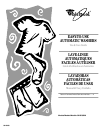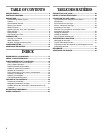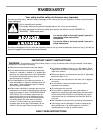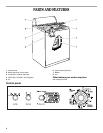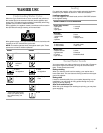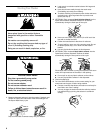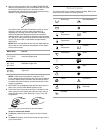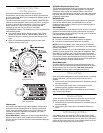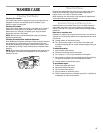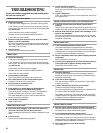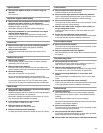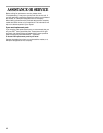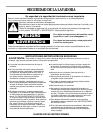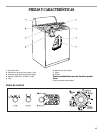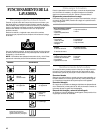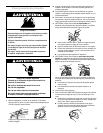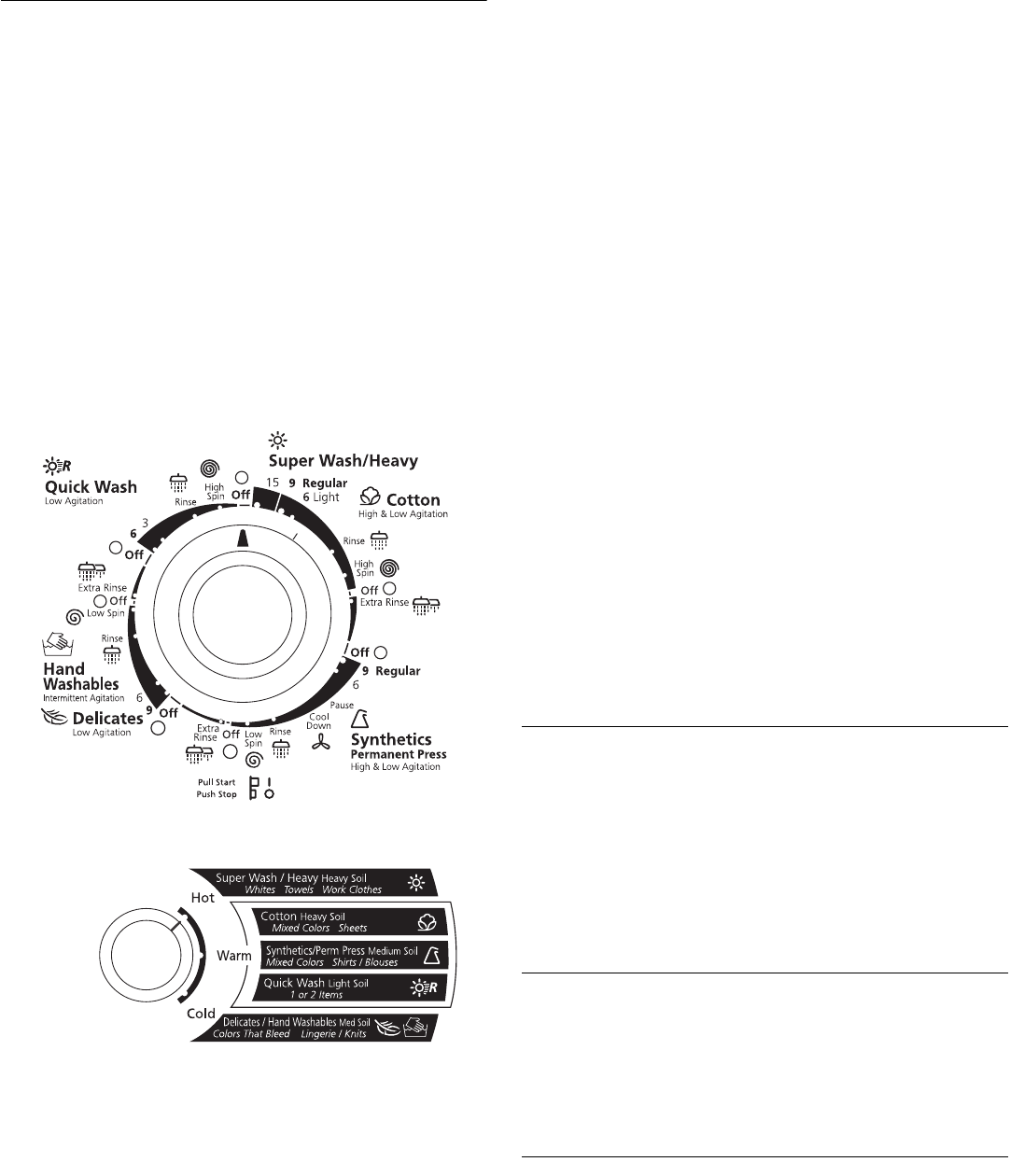
8
Selecting a Cycle, Time,
and Temperature
This section describes the available wash cycles and
temperatures, and will help you make the best cycle selections
for your wash loads. Each cycle is designed for different types of
fabric and soil levels.
The labels next to the selections on the WASH TEMPERATURE
selector are recommended wash cycles, load colors, and types
of loads to use with each temperature. To use your washer,
simply choose the cycle on the Cycle Control knob that
corresponds with the one you chose on the WASH
TEMPERATURE selector. The selections are color-coordinated to
make washing easier.
■ The washer pauses briefly throughout each cycle. These
pauses are normal. Refer to “Normal Washer Sounds” to
learn more about the sounds you may hear during a wash
cycle.
■ Refer to “Understanding Washer Cycles” to learn what
happens during a wash cycle.
Cycle Control knob
Wash Temperature
Cotton cycle
The Cotton cycle features high-speed agitation followed by a
brief period of low-speed agitation for cleaning cottons and
linens. High spin speeds shorten drying times. Select 6 or 9
minutes of wash time, depending on whether your load is
moderately or heavily soiled.
Super Wash/Heavy
-
Select the 15-minute Super Wash/Heavy
feature to wash heavily soiled loads that need maximum soil
removal. Use two times the amount of recommended detergent
for this cycle.
Synthetics/Permanent Press cycle
The Synthetics/Permanent Press cycle starts with high-speed
agitation and then steps to low-speed agitation for cleaning
permanent press blends and synthetic fabrics. To minimize
wrinkling, this cycle features a cool-down rinse and a low-speed
final spin. Select 6 or 9 minutes of wash time to clean lightly to
moderately soiled loads.
Delicates cycle
The Delicates cycle features low-speed agitation for gentle soil
removal from delicate items and washable knits. Low spin
speeds minimize wrinkling. Use this cycle for cleaning lightly to
moderately soiled loads.
Hand Washables
The Hand Washables cycle features a series of brief, low-speed
agitations and short soaks to gently clean special-care items.
Low spin speeds minimize wrinkling. Use this cycle for cleaning
lightly soiled hand washables.
Garments are labeled "Hand Wash" because:
■ The fiber or construction may be sensitive to agitation.
■ The fabric contains sensitive dyes that may bleed.
NOTE:
Some "Hand Wash" items, particularly wool, naturally
shrink when washed. Keep this in mind when you purchase items
labeled "Hand Wash".
Properly sort and then use your Hand Washables cycle for gentle
washing. If items appear to be floating due to trapped air, stop
the washer by pushing in the Cycle Control knob. Push items
down into the water. Restart the washer by pulling out the Cycle
Control knob. Follow care label directions for drying. Items that
may shrink should be dried flat. When still wet, block these items
by gently stretching to original measurements.
Quick Wash cycle
The Quick Wash cycle features a reduced agitation speed for
gentle soil removal, while providing shortened wash/rinse, drain,
and spin times. Use this cycle with a
low water level and a
warm wash
to quickly clean a few lightly soiled items.
Rinse and Spin
When using extra detergent for heavily soiled clothes, or washing
special-care items, you may find an extra rinse and spin is
needed.
1.
Push in the Cycle Control knob and turn it clockwise to any of
the Rinse settings.
2.
Pull out the Cycle Control knob. The washer fills to the
selected load size, agitates, drains, and spins.
NOTE:
An EXTRA RINSE option is available (on some models).
See “Starting Your Washer.”
Drain and Spin
A drain and spin may help shorten drying times for some heavy
fabrics or special-care items by removing excess water.
1.
Push in the Cycle Control knob and turn it clockwise to any of
the Spin settings.
2.
Pull out the Cycle Control knob. The washer drains, then
spins.
Self-Cleaning Lint Filter
Your washer has a self-cleaning lint filter at the bottom of the
basket. Wash and rinse water flow over the filter during agitation,
separating the lint from the water. The lint spins out of the system
during the spin part of the cycle. If your washer drains into a tub,
remove any lint collected in the tub or strainer.



